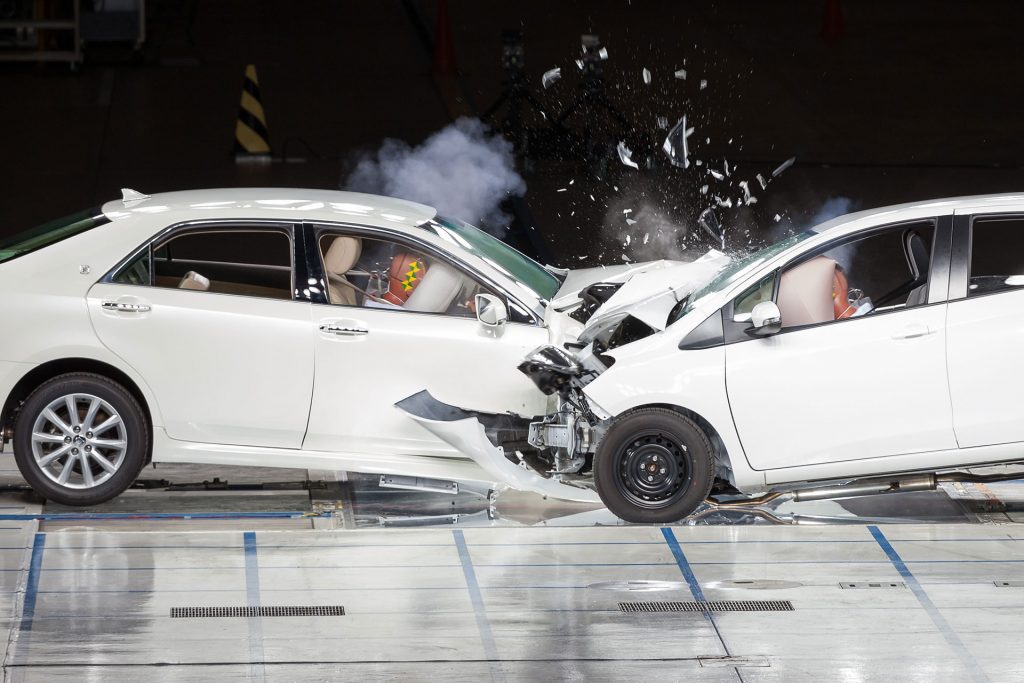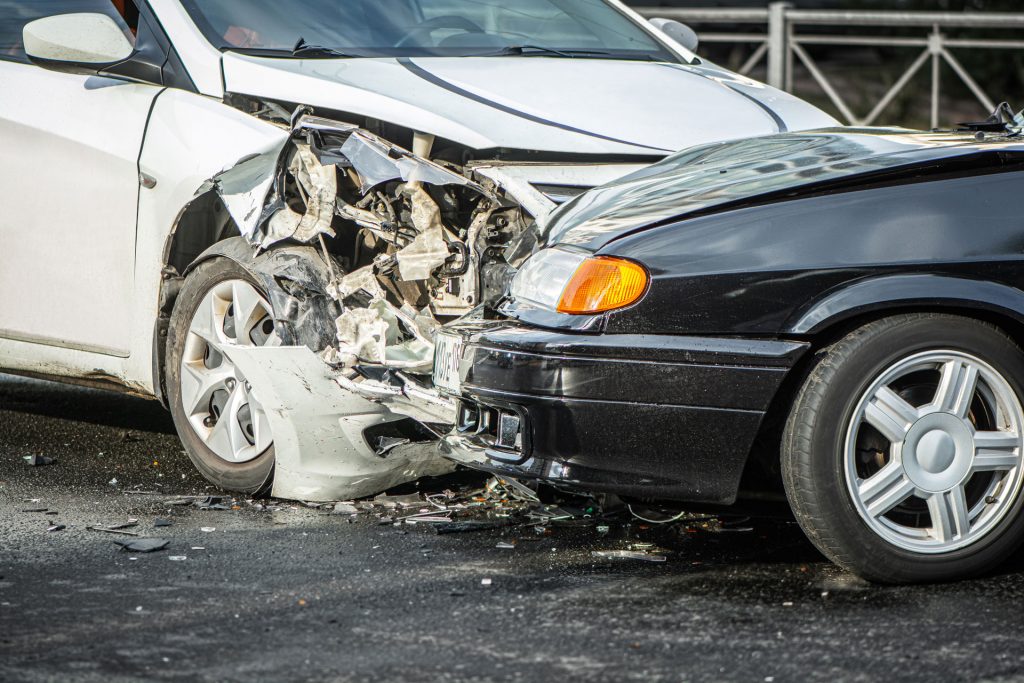How to avoid a head-on collision
Collisions on the road are never good, but some crashes are worse than others. Head-on collisions between two vehicles can be some of the deadliest accidents, as well as causing many other injuries and major damage. Drivers need to be aware of the dangers of head-on collisions and to be careful to avoid getting into one of these types of crashes. Although it may not be possible to prevent all head-on collisions, drivers should take precautions to avoid situations where head-on collisions can occur.
The Canadian Oxford dictionary defines “head-on” as being “with the front foremost” or “in direct confrontation.” Head-on collisions are crashes in which two vehicles hit each other from the front, often with an extremely destructive effect to the occupants of both vehicles and even to others on the road.
Head-on collisions account for a small number of accidents in Ontario, as elsewhere in Canada, but they can be very destructive. According to the Preliminary 2019 Ontario Road Safety Annual Report, these head-on impacts were the main cause of 995 out of more than 33,000 road accidents that year, but they had the second highest fatality rate of all crashes, coming after single-vehicle crashes.
Why Head-On Collisions Are So Dangerous
Part of the reason for the high proportion of fatalities in head-on collisions is where and how these crashes occur. In many cities and towns, boulevards or other barriers help prevent vehicles travelling in opposite directions from crashing into each other, or at they least slow the vehicles down. Head-on collisions are still possible, but they are less likely to be very serious if they occur at all. Many highways and other high-speed roads, however, have no physical barrier to prevent vehicles from crashing into each other. At highway speeds, these crashes can be especially deadly.
In a head-on collision, the occupants of a vehicle are likely to be thrown forward by the force of the impact. If they are not wearing their seat belts, or if the seat belts malfunction, any occupants of the back seat could be thrown into the front seat and crash into the driver and front passenger, while the driver and front passenger could crash into the windshield. The injuries from these kinds of impacts are often severe, and fatalities often result. Wearing seatbelts can help reduce the injuries, although the damage can still be severe.
With the potential dangers of head-on collisions being so serious, drivers should be especially careful to avoid this type of accident. As the Safe Driver website notes, avoiding a head-on crash involves preparation and planning. Constant awareness of the surroundings can be key to avoiding an accident. Drivers should look well ahead on the road to assess oncoming traffic to see if another vehicle is moving into their path, whether deliberately to pass another vehicle or inadvertently through drifting.
Skill Levels
Drivers should always be aware that road users have different levels of skill and tolerance for risk, which can sometimes lead to accidents. Many of the potentially dangerous actions that people take are part of normal driving, but the smallest misjudgment can be deadly in many cases. If drivers are reckless and take unnecessary risks or if they lack the judgment of the right amount of space needed for various maneuvers, they could easily cause an accident.
On a two-lane highway, for example, a driver might need to get into the opposing lane to pass a farm machine or other vehicle. With good judgement of the amount of space available and the speed of traffic, this can be a relatively easy procedure. If the driver misjudges the amount of space, however, or has to slow down unexpectedly, oncoming traffic may be too close to complete the move safely. Unless the driver can pull back into the correct lane quickly, a head-on collision may occur.
Learning to judge distances is an important skill that often comes with experience. For drivers pulling out into the opposing lane, being able to judge when enough space is available to pass another vehicle and return to the correct lane can take time. Drivers travelling in the opposite direction should also be aware of the possibility that a vehicle may move into their lane and be prepared to take evasive action if necessary.
In some cases, drivers may be able to move into another lane or onto the shoulder of the road to avoid a head-on collision. In other cases, it may be possible to warn the other driver to return to the correct lane or to brake and thus give the driver more time to move. However, braking can also be dangerous as it can cause a secondary accident when other vehicles crash into the rear of the first one.
Crumple Zones and other Features
Head-on collisions can be deadly, but vehicle manufacturers have built safety devices into their designs. One of the most important safety features designed for head-on collisions is the crumple zone. As Ian Law notes in his May 2011 article on Wheels.ca, people’s ability to survive this kind of collision often depends on features called crumple zones and passenger safety zones.
Crumple zones are areas of a vehicle, normally at the front, that are designed to absorb some of the force of an impact. When a vehicle hits a heavy object, the front end will crumple so that some of the energy disperses before it reaches the people inside the vehicle. Passenger safety zones, on the other hand, are designed to sustain the force of an impact without changing shape. That way, the passengers are less likely to be crushed by vehicle parts buckling in on them.
People often think that they are safer in a larger vehicle like a truck than in a smaller one like a compact car. However, as Law explains, this is not necessarily the case. Although the size of the larger vehicles gives some protection, the momentum created by the added weight means that the vehicle will not stop as quickly as a smaller and lighter vehicle would.

The quality of the brakes is also an important factor in preventing head-on collisions. While some large vehicles are equipped with good brakes that can counteract much of the force of momentum, it will still take a large vehicle longer to stop than a smaller one. Because of this factor, drivers of large vehicles should be sure to allow more space on the road than they otherwise might, especially if a head-on collision is possible.
The ability to stop is an important factor in avoiding head-on collisions, and each vehicle can have slight differences in handling that can affect the likelihood of an accident. Sports cars can stop and start much more easily than other vehicles, and older vehicles may have lost much of their maneuverability because of rusty or worn-out parts. If possible, drivers should test their vehicles out on quiet streets before attempting to drive on two-lane highways or narrow gravel roads where the danger of head-on collisions is greater.
As the Safe Driver website notes, the potential for a head-on collision is a surprise that no one wants. The dangers of head-on collisions are greater in high-speed situations than on city streets, but drivers should be careful wherever they operate a vehicle. On quiet residential streets, for example, drivers may not be expecting traffic coming from the other direction and may tend to drive down the middle of the street rather than the correct side. If they are not careful, this practice could easily result in a head-on collision.
Preparing for a Head-on Collision
When faced with a possible head-on collision, many drivers would tend to panic and could swerve into other traffic or possibly crash into an object at the side of the road. If pedestrians are nearby, this could result in major injuries and damage. The most important point for drivers to remember is to stay calm and not to react blindly.
No one likes to think about potential accidents, but being prepared is an important part of prevention. Before going out on the road, drivers should review some of the safety procedures for dealing with dangers such as another vehicle approaching in the same lane from the opposite direction. Although it is impossible to be sure of the other driver’s reactions, drivers can consider different scenarios and decide how to react to each one. That way, they can respond calmly, knowing that it may be possible to avoid a serious accident.

Even when a collision is inevitable, drivers can try to reduce the effects. In general, a glancing blow is less serious than a head-on collision. If it is impossible to avoid a head-on collision entirely, drivers may be able to make the accident less serious by turning the vehicle slightly to the side so that the front of the vehicle does not sustain the full impact of the collision. Although this tactic can have its own dangers, such as spinning out of control, it may prevent more serious consequences.
Head-on collisions are not the most common type of accident, but they can be the deadliest. Learning the best methods for avoiding these types of collisions is important for every driver. Being safe on the road can often depend on knowing how to deal with these dangers.
